
A visitor lies in a stairwell with Scottish artist Jim Lambie’s artwork ‘Zobop’ at the 2023 Kochi-Muziris Biennale in Kochi, India. The Kochi Muziris Biennale is one of Asia’s biggest contemporary art festivals on the island of Fort Kochi in Kerala. (Photo by Abhishek Chinnappa/Getty Images)
| Photo Credit: Abhishek Chinnappa
Curtains come down on the fifth edition of the Kochi Muziris Biennale on April 10. The four months long art show, which exhibited 87 artists in 14 venues, was installed under challenging circumstances, coming after a protracted pandemic.
Opening to a staggered start (shifted from December 12,2022 to December 23) it derailed schedules amid criticism. But as venues opened slowly, and the exhibitions found their audience, the Biennial unfolded to present a finely distilled show of contemporary art. This edition has recorded approximately nine lakh visitors, the highest footfalls in comparison to its four earlier editions.
Its on the ground impact has been an unexpected bounty after three years of pandemic related inactivity, which was felt across businesses and people dependant on it.
Domestic travellers
“Tourism did not pick up in Fort Kochi till the certainty of the Biennale was established,” says tour guide Ajita Scaria, discussing how business was especially difficult through lockdown. Ajita launched a curated heritage walk of Fort Kochi last year. According to her the season saw, for the first time, an influx of domestic tourists, arriving only to see the Biennale.
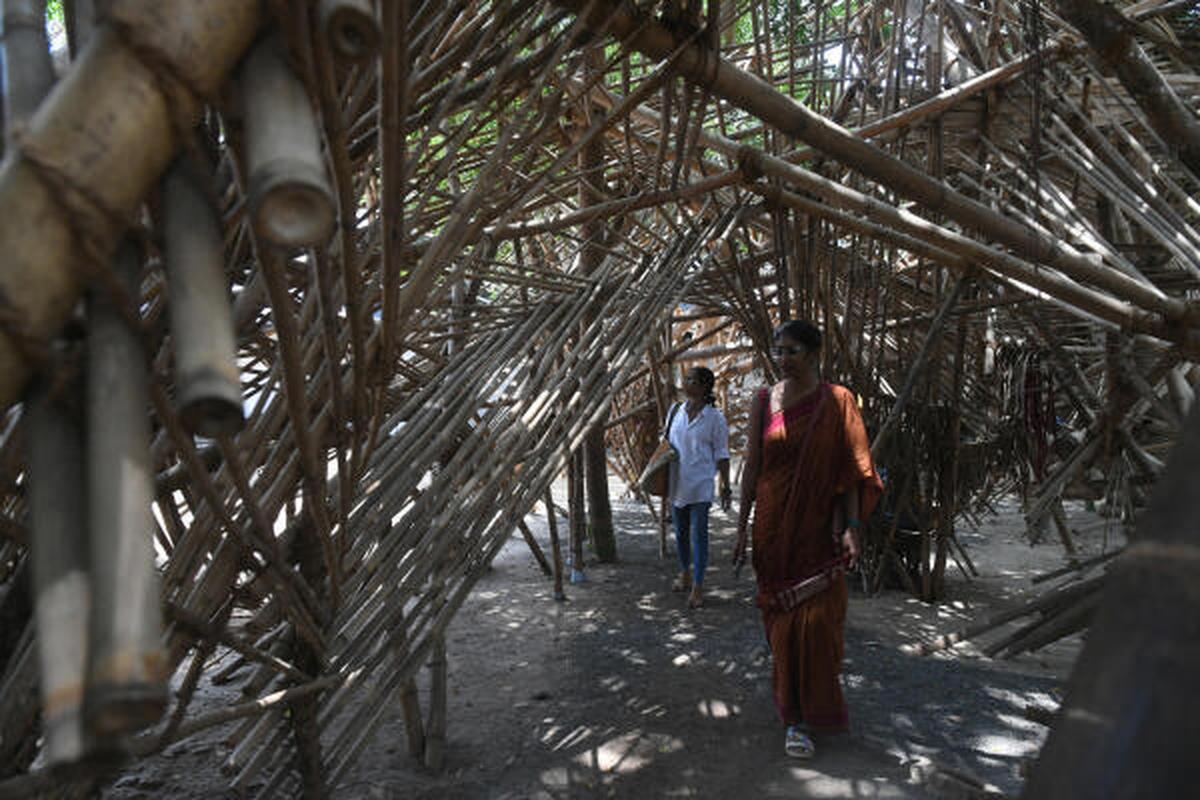
‘Improvise,’ an installation made with bamboo by Delhi -based artist Asim Waqif
| Photo Credit:
Thulasi Kakkat
Prior to the pandemic, Fort Kochi was known as a destination for the foreign tourist. It’s tryst with the domestic traveller started with the lifting of the COVID 19 imposed lockdown. With increasing number of Indian tourists, the homestays, cafes, hotels and shops cultivated a familiarity with this new clientele. The Biennale is witnessing a direct impact of the transition.
Backpacker’s hostels
Renel Joe, Manager, Zostel, a 34-bed backpacker’s hostel at Njaliparambu in Fort Kochi says they have been running houseful for the past four months. “Not a single bed is vacant,” says Renel adding that a bed in air-conditioned dormitory can be availed of at ₹500 (₹ 600 on weekends). He too notices a change in the clientele with more North Indians and “lots of Malayalis from other parts of Kerala and Bengaluru”. “They are mostly in the 20-30 age group and a majority of them are IT professionals and could work from here too. There were a lot of artists from the North too,” he says.
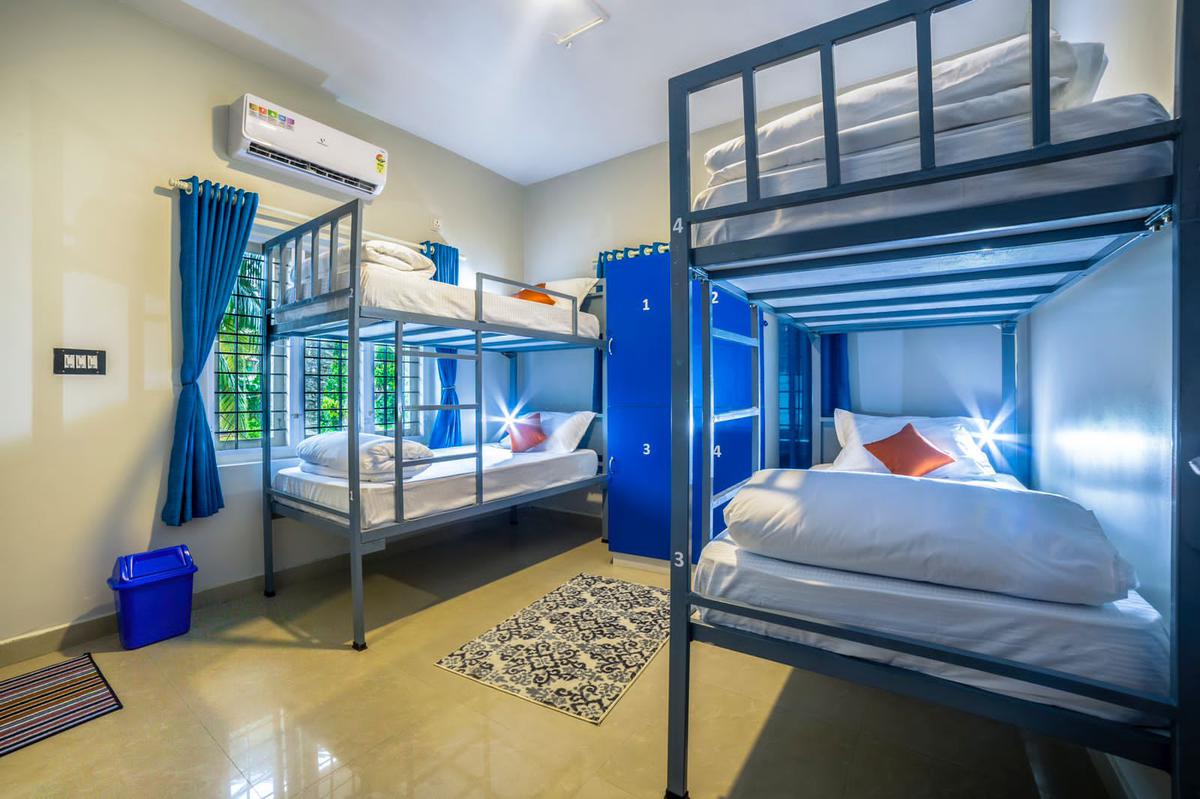
A room at Zostel, a backpacker’s hostel in Kochi
Mirza Sherief opened Bunk House, with two of his childhood friends in October 2022. A restored 200-year-old Dutch house, the space with 24 beds has hosted 350 foreigners in the past five months, besides, groups of students from the Wadiyar Centre for Architecture, Conflictorium: the Museum of Conflict, Ahmedabad and NID students along with the faculty. With a lounge area that has workstation facility, library and art exhibition space it provides breakfast on order. “We have had on an average 85% occupancy this season,” says Mirza.
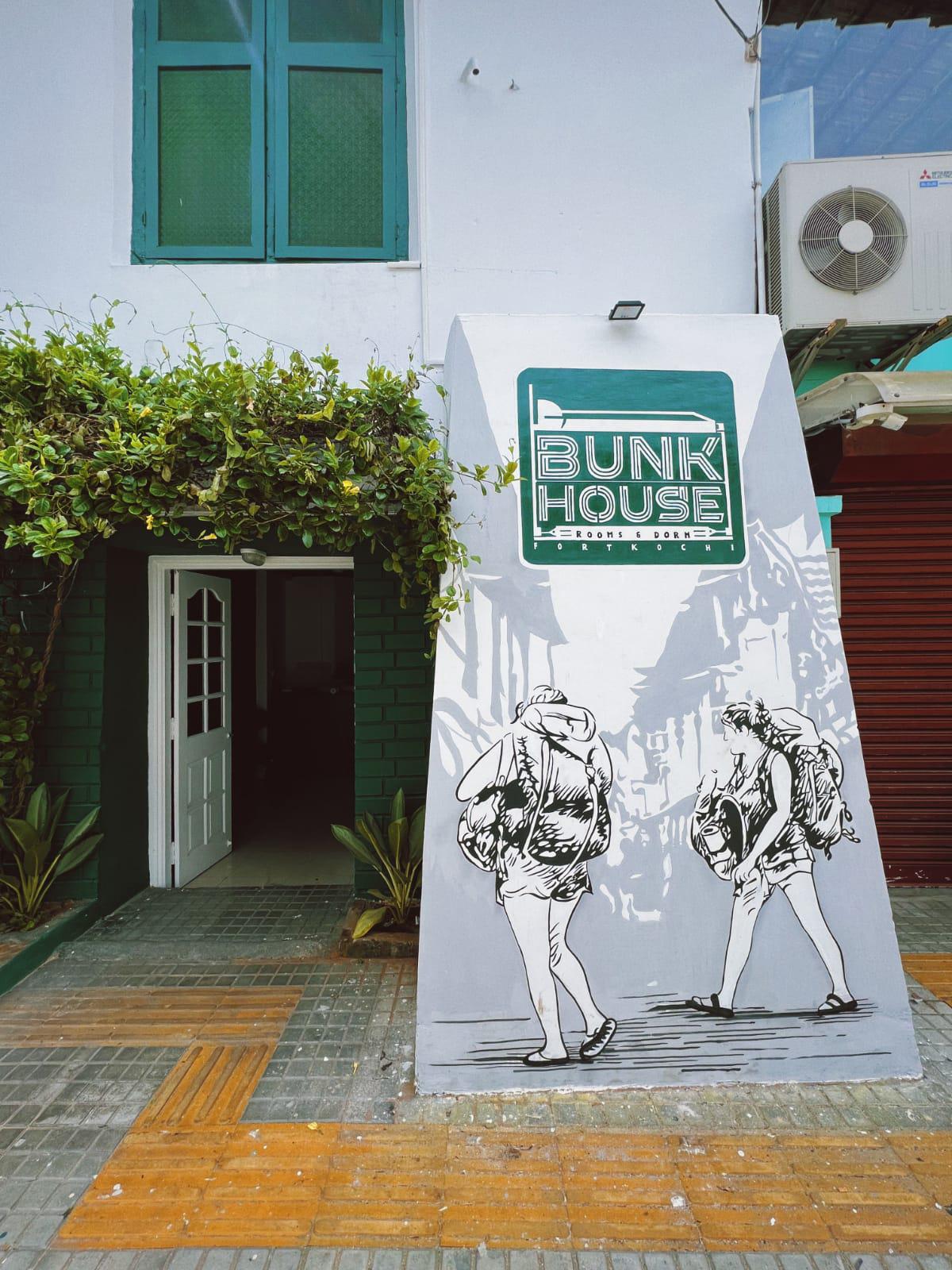
Home stays
MP Sivadathan Director K-HATS (Kerala Homestay & Tourism Society) says that post pandemic there’s been a surge in enquiries on starting a homestay. “The homestays in Fort Kochi, Mattancherry and Kumbalangi have been full since December, due to the Biennale. Fifteen new homestays have opened and 50 are waiting to get classification,” he says. Room tariff in a homestay is anywhere between ₹1000 to ₹3000.
Eating Out
January 2023 saw the opening of two pure vegetarian North Indian cuisine restaurants — Kadai Veg Tables on Bazaar Road, opposite the Coast Guard centre and Anandh Bhavan on Njaliparambu Junction. Sreelakshmi N Prabhu, proprietor of the latter and also a participant of Masterchef Season 5 says that in her decade long experience in teaching cookery she has noticed a growing trend towards vegetarian cuisine among westerners. “Hence I always thought that a vegetarian restaurant in Fort Kochi was the need of the hour.” She says that a number of international travellers that came for the event were her guests too. “Thali meals have been a hit,” says Shaji of Kadai Veg Tables adding that the Biennale gives extra appeal to Fort Kochi attracting holidayers. The Roti, on Eliphinstone Street and Coriander on Napier Street are the other newly opened North Indian cuisine restaurants. “There was no place in Fort Kochi that served vegetarian food and with the increase in number of domestic travelers, especially from the North, it was a good bet,” says Dexter Fernandes, who manages Coriander.
Designer Pop Ups
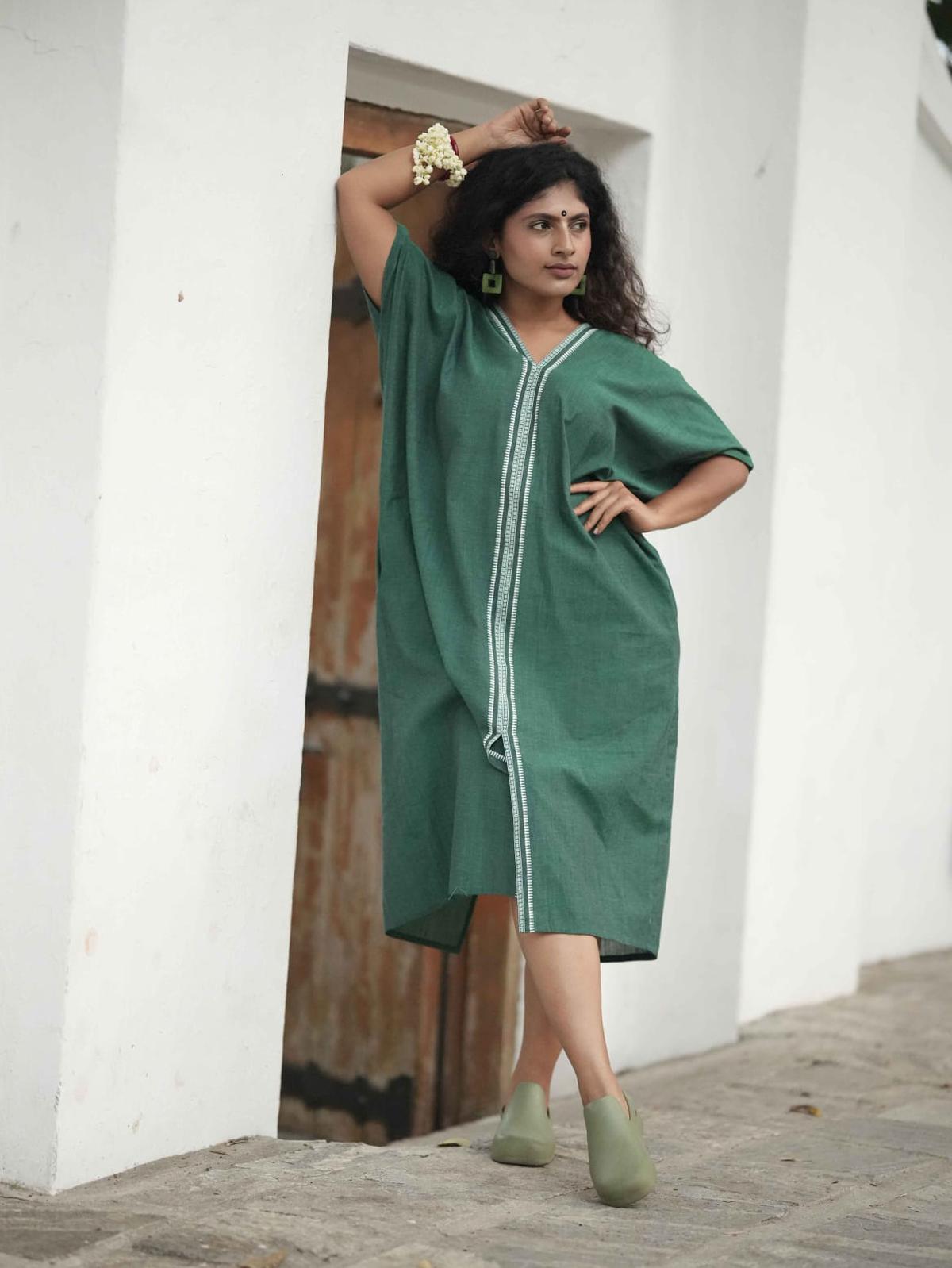
Designer kaftans were a hit with tourists at the art biennale. A model wearing a By Vandy label
The Biennale saw the opening of concept stores like RechuuX Bodice, Slow by Cult Modern, Save the Loom and The Shop, some just for the duration of the event. Many pop-ups sprang up for short periods of a week or a few days.
Vandana Vinod set up By Vandy at Lila gallery and cafe on Parade Ground, in February end, to showcase a special collection for the visitors to the Biennale. ‘The Biennale crowd also wanted what Kerala had to offer,” says Vandana who put up a Black and White collection and the ‘Kaavi’ collection made with Kerala mundu for the European travelers.
The Kochi Biennale Kada, at Aspinwall House, curated by designer Annah Chakola was a “wild wild success, above and beyond,” gushes Annah who had done a very slick selection of products from across India. “The Biennale totes and the Kerala handloom towels did extremely well, just as Forest Post brand skincare products did,” she says. She had to run four productions for kaftans, during the course of the event, as the apparel moved off the shelves very fast.
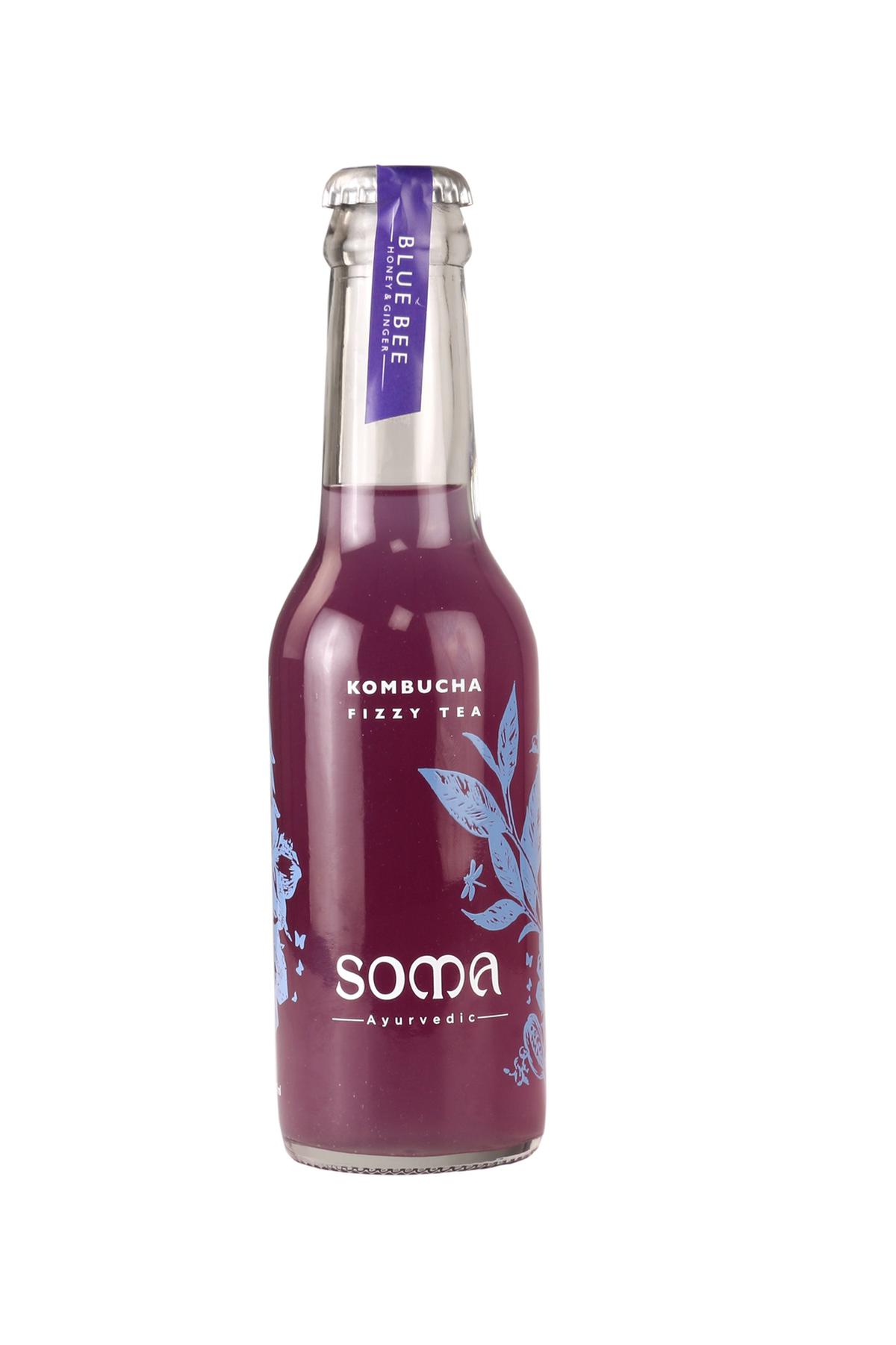
Idukki Kombucha
Kombucha, a fermented tea, became popular during the pandemic. , the world over. The Idukki-based brand Soma’s Kombucha fizzy tea, the official drink of the Biennale proved to be a runaway hit as visitors tried the bottled drink sold from a push cart outside Aspinwall House, the main Biennale venue. Sold in 12 varieties, its most popular flavour was oak wood infused Ayurvedic Kombucha with mango, lime and Makhrut leaves. “The Biennale crowd is aware of the Kombucha as a health drink; many are trying it for the first time. People are posting their photos with the drink on social media and taking the bottle as souvenir,” says Girish Gopinath, partner Ashok Social Ventures, the makers of the drink, adding that they sold as many as 1500 bottles in a month. The drink that comes at ₹ 180 to ₹350 for a bottle is made from tea and foraged herbs like amla, brahmi, fig and leaves. The most expensive tea, Wine Alternatives, at ₹ 350 comes in two flavours—Gulkand and Soma Jun(honey).
#edition #Kochi #Muzirs #Biennale #close #bounty #local #businesses #people
